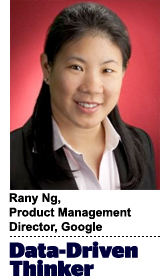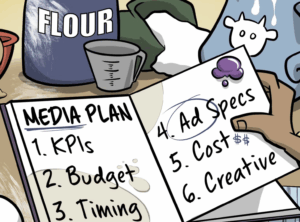 “On TV And Video” is a column exploring opportunities and challenges in programmatic TV and video.
“On TV And Video” is a column exploring opportunities and challenges in programmatic TV and video.
Today’s column is written by Rany Ng, product management director, video and TV advertising, DoubleClick by Google.
I enjoy a good binge-watching session of “Breaking Bad” as much as the next person. But when it comes to television, what really fascinates me is not what’s on it, but what’s behind it. I have the good fortune of getting to spend a lot of time thinking about the future of television and it’s safe to say that there are lots of exciting changes to come.
I predict that the implementation of programmatic TV will happen in three phases. In the first two (largely) digital phases, buyers and sellers will use programmatic technology to transact premium digital video buys and place ads in streaming and video-on-demand TV content across connected and over-the-top devices. The third phase will be the most technically complex where we make programmatic work for linear TV.
The industry will work its way through these phases with incremental improvements, such as applying more data to TV buying, narrowing the gulf between digital and traditional TV measurement and implementing transactional efficiencies. Yet each improvement is just a step on a steep staircase. When we get to the top of those stairs, advertisers will be able to buy all their media, “TV” or video, auction or reservation, across all screens, in the same system. Advertisers will be able to make decisions in a unified fashion leveraging the same data across all media including linear TV and digital video. That isn’t incremental, it’s monumental.
Programmatic technology has the potential to encapsulate all media buying. It is the application of audience data and technology automation to buy ads, wherever those ads are viewed. It’s a worthy investment because it touches four critical areas for driving advertising effectiveness: cross-screen measurement, cross-screen delivery, data-driven targeting and universal buying automation. TV buying as it exists today has few, if any, of these capabilities. In contrast, programmatic TV buying promises to give advertisers all of these capabilities in a coordinated fashion.
Cross-screen measurement will be more immediately actionable. The future currency for cross-screen TV will likely be a hybrid of the census-based metrics prevalent across the web, which measure every action, such as views, impressions or completes, and the panel-based gross ratings points (GRPs) from the traditional TV world. Advertisers will get insights from metrics like video completes, views and even lift in brand awareness while campaigns are still in flight, allowing them to improve their TV campaigns while they are running. This will be a major improvement over the lag in traditional TV reporting where insights come days, weeks or even months after TV campaigns have run.
Cross-screen delivery means that advertisers can focus primarily on the audiences they’re reaching and secondarily on the devices and screens they’re reaching them on. This is an improvement over today’s often siloed approach of running a TV campaign, independent of a desktop video campaign, independent of a mobile video campaign, independent of a over-the-top campaign.
Data-driven targeting will leverage advertisers’, broadcasters’ and distributors’ growing investments in data by applying it to all media campaigns across all screens, including traditional TV. Recent research by Teradata shows that data-driven marketing is either embedded or strategic for 78% of marketers this year vs. just 36% in 2013. This majority of marketers will embrace the ability to apply data-driven advertising to TV along with everything else.
Universal planning and execution automation will make it possible to plan, execute and measure TV advertising alongside digital advertising in one system. This system would be adept at speeding up TV planning and replacing manual processes. The resulting benefits include more integrated, agile and effective advertising and a better use of staffing resources.
Advertisers simply won’t ignore the potential of getting the combined benefits across these four critical capabilities. The benefits have already accelerated programmatic buying in digital video. In 2014, there was a fourfold growth in impressions for videos transacted programmatically. This growth is a leading indicator that programmatic technology is bound to come to linear TV as well. Advertisers want the overarching benefit of unified buying and programmatic technology offers a way to get there.
There was a time when having a color TV was something new and unique among all of the black and white TVs you could buy. In a few years, programmatic will be to advertising what color is to TV today. It will simply be the way that all advertising is done, regardless of whether those ads are bought directly or through an auction or if they run on a 5-inch screen or a 50-inch screen. And that will be monumental.
Follow DoubleClick (@doubleclick) and AdExchanger (@adexchanger) on Twitter.











